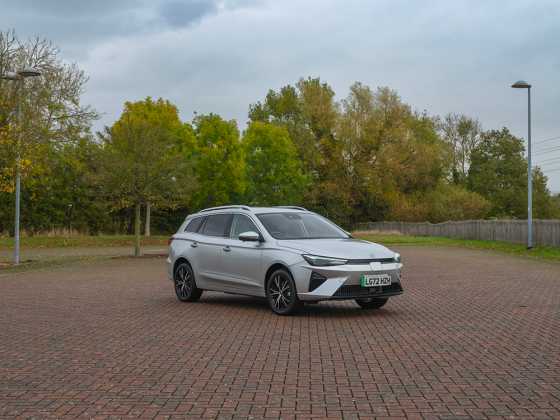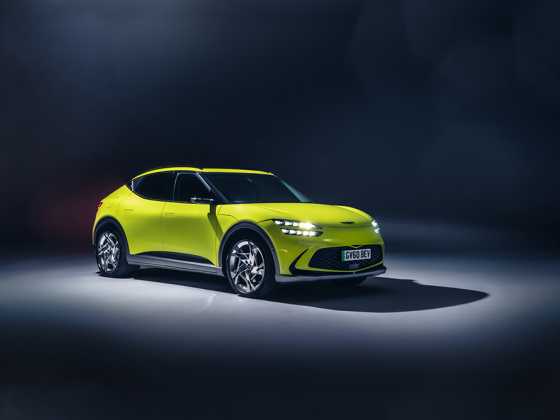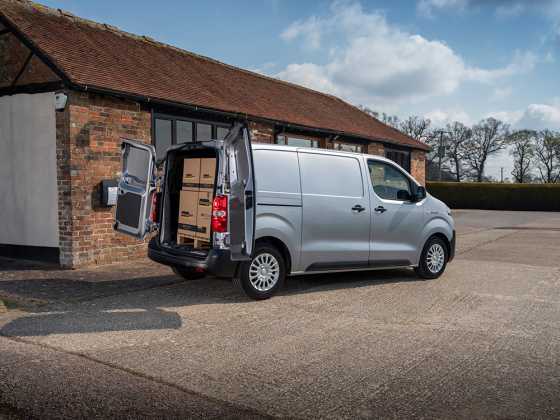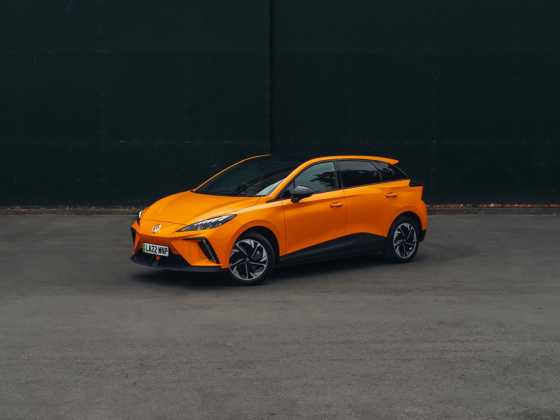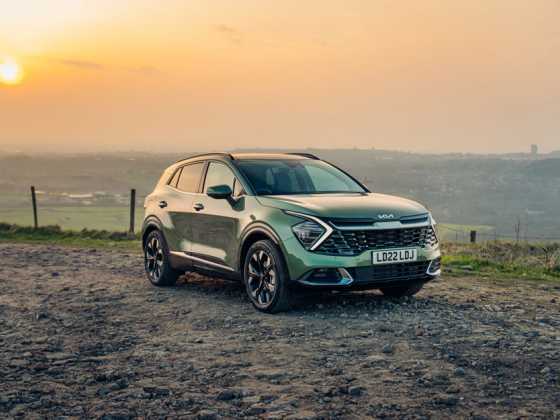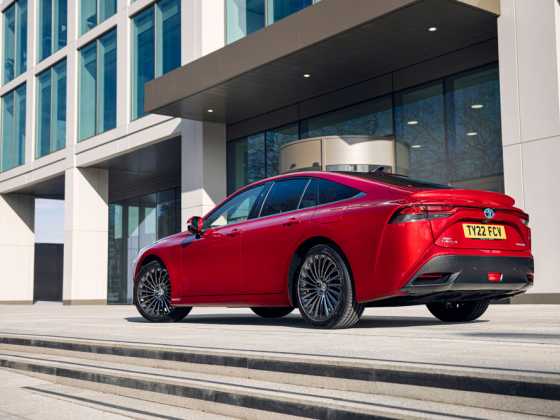First drive: 2018 Nissan LEAF Tekna 40kWh
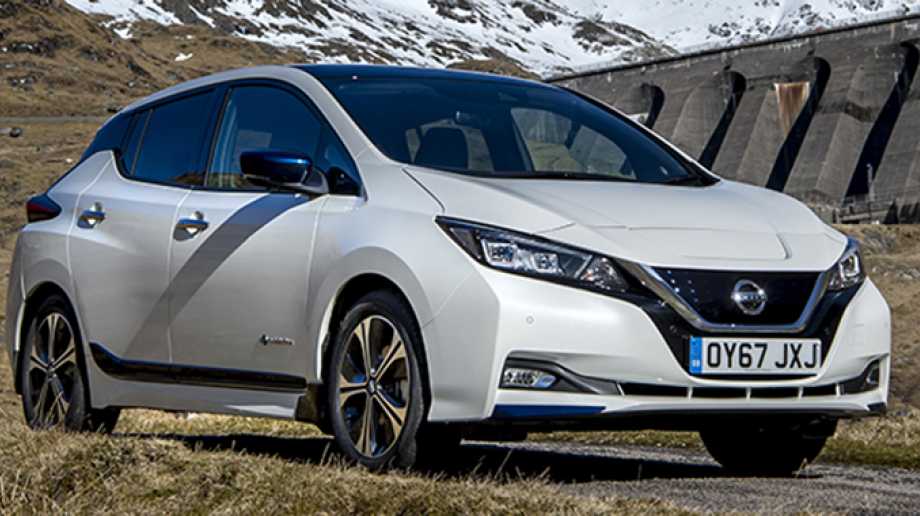
The original Nissan LEAF was a trailblazer, the first big-selling pure electric car. Eight years and 300,000 cars later, there’s a second-generation version. Richard Gooding finds that a longer driving range, a more powerful electric motor and easier-on-the-eye styling are just a few of the advances
What is it?
The Nissan LEAF is the best selling electric car in the world, with over 300,000 finding homes since its launch in 2010. A programme of steady but useful improvements and refinements has ensured the car has remained popular.
Yes, its looks may have been divisive, but with a 30kWh battery upgrade, the first-generation Leaf was still a capable family-friendly electric option. Now, there’s a new one.
The second-generation LEAF builds on the successful foundations of its predecessor. Built on the same platform, but with more on-board driver technology and mainstream, conventional looks, the new car packs a 40kWh battery and a theoretical combined driving range of around 168 miles on the new Worldwide Harmonised Light Vehicle Test Procedure (WLTP).
There is also a more dynamic feel, technical innovations such as Nissan’s ‘e-Pedal’ system, as well as improved cabin fit and finish. To all intents and purposes, Nissan has listened to its customers and changed what needed changing with the old car, as well as adding in new and useful driving technology.
How does it drive?
The new LEAF is the first all-electric car to enter a second generation. Nissan has done a good job of updating the looks as to not alienate drivers of the older car, but also to attract new owners.
Smart, clean, and good-looking – especially in a monotone finish or the new ‘Spring Cloud’ colour – the new model even looks more dynamic than the old one when it’s standing still.
A floating roof, holographic front ‘grille’ and gloss black tailgate add stylish touches to a shape which features elements of Nissan’s latest design DNA.
Inside, drivers of the first-generation LEAF will feel at home. There’s a familiar feel to all the controls, and the centre console and ‘transmission tunnel’ are very similar to the outgoing car.
There’s the same ball-shaped gear selector and ‘wing’-shaped air conditioning controls, while the new instrument panel ahead of the driver is much more sophisticated.
A seven-inch digital TFT screen ‘combimeter’ imparts clear and crisp displays and sits alongside an analogue speedometer. The pairing works well, and the digital screen shows economy read-outs, and a range of displays relating to the numerous safety and driving technologies.
It’s true that cabin quality has improved, but it ultimately still lags behind that of selected rivals. Practicality is on the pace, though, with a luggage capacity of 435 litres with the rear seats in place, unless the Bose audio system is fitted.
The NissanConnect EV seven-inch colour touchscreen infotainment system is fitted from Acenta models upwards, and although it's undeniably useful, the on-screen graphics are broadly similar to the old LEAF, which means a dated appearance, while the system isn't the smoothest in operation.
Because of its all-electric powertrain, the old LEAF was always quiet on the move, and the new car builds on this but sets a new standard for refinement.
Nissan has added 30 per cent more sound insulation on the second-generation model and you can hear the difference. Additional soundproofing in the floor, side panels and wheel arches keeps outside noise to the absolute bare minimum.
Redesigned suspension adds further comfort, the new car enjoying an uncanny mix of both compliance and agility. A 5mm lower centre of gravity than the old car – with the natural benefit of the platform-mounted battery packs – ensures stability and an unruffled composure.
The steering rack has been tuned for a more sporty feeling, too, with lock-to-lock turn reduced from 3.2 to 2.6. All in all, it’s a convincing dynamic package, and the new car feels a lot more involving to drive. In fact, at times you don’t feel you’re in an electric car at all.
Nissan trumpets the new car’s technological advances, and with good reason. The e-Pedal (see below) really does work, and enables the new LEAF to be driven with just one pedal, just as the Japanese car maker suggests.
Yes, there is a similar feature on the BMW i3, but the new LEAF’s is switchable, and can be turned off if the modulation is a stretch too far for some drivers. It’s such a brilliantly easy and impressive system, though, we suspect it will make an appearance on a good selection of forthcoming EVs.
The outgoing car’s ‘Eco’ setting, and ‘D’ and ‘B’ (additional regenerative braking) driving modes remain. In the default ‘D’ mode the new LEAF is a spritely performer, with 0-62mph coming up in 7.9 seconds, the car using all of its 236lb ft / 320Nm of torque to exemplary effect. The second-generation electric Nissan runs out of electric puff at 89mph.
The new LEAF is also the poster car for Nissan’s new and advanced range of ‘Intelligent Mobility’ technologies. The ProPILOT offers systems to encourage a ‘safer, more comfortable’ drive, while ProPILOT Park features fully autonomous parking thanks to an array of sonar detectors and cameras.
The ProPILOT semi-autonomous technology is aimed at motorway use and is optimised to aid in heavy traffic or high-speed cruising situations. Using the car’s cruise control, ProPILOT adjusts the car’s speed to the traffic ahead, as well as keeping it in the centre of the lane.
The ’Steering Assist’ is disconcerting at first, as the steering wheel can be felt making tiny movements through your fingers, but it doesn’t take long to get used to.
Remove your hands from the wheel and car will almost drive itself, but will flash ‘hands-off’ warnings after a series of timed intervals, and will bring the car to a complete stop if necessary.
It will do the same in heavy traffic as it automatically manages the distance to the car in front, and if that car stops, the new LEAF will, too, restarting automatically when the traffic is on the move again.
ProPILOT Park meanwhile works in both parallel and bay parking space scenarios and directs the car to the chosen spot via a string of driver confirmations.
What range does it have?
Nissan quotes a combined driving range of up to 168 miles on the new WLTP cycle, with up to 258 miles in predominantly city or urban conditions.
Over the course of two days with the car, we certainly saw around that mark. Despite the cold conditions in the Highlands of Scotland, the 'full' range started at around 150 miles, with electricity consumption hovering around the 3.3 miles/kWh over a 200-mile distance.
The official range is a whole 85 per cent up on early first-generation cars, and represents the move in technology since the original car debuted eight years ago.
Other aerodynamic aids include the new car’s 0.28 Cd figure, and details on the rear pillar and spoiler which improve driving range by 1.5 miles, as well as an underbody designed to give zero lift.
Heated seats and a warmed steering wheel are available on N-Connecta cars upwards to save energy. As before, the ‘B’ driving mode enjoys the most severe level of regenerative braking – which puts more energy back into the battery when slowing down.
In turn, this helps increase the amount of charge (and therefore range) available, while there’s also now the advantage of the new e-Pedal, which also recuperates precious energy.
How long does it take to charge?
As before, the new LEAF features CHAdeMO rapid charging and Mennekes ‘Type 2’ charging capabilities.
Connect the new LEAF to a 50kW rapid charger and it will be refilled from empty to 80 per cent capacity in 40 to 60 minutes, while a 7kW / 32A home charger / wallbox will take around 7.5 hours to fully replenish the car. Plan ahead with a 10A three-pin socket, though, as the car will be charged from flat to 100 per cent in 21 hours.
As standard, all new LEAFs come with a 6.6kW on-board charger, and Nissan has chosen Chargemaster as its home charging partner.
There have been reports of longer-than-usual-duration rapid-charging issues with selected customer cars which repeatedly charge this way, but Nissan is investigating these experiences.
Nissan also sees the LEAF as part of an energy ecosystem, and offers energy storage packages where the car serves as a vehicle-to-grid source of power, and along with solar panels and the company’s xStorage hardware, owners can charge using renewable energy and even sell it back to the National Grid when demand is high.
What does it cost?
The new Nissan LEAF is available in four trim levels, and here, we’ve quoted prices with the government’s £4,500 Plug-in Car Grant (PiCG) deducted.
The £21,990 Visia kicks off the range and features 16-inch steel wheels, automatic air conditioning, auto lights and wipers, cruise control, front and rear electric windows, a front centre armrest, and i-Key and push-button start.
LED daytime running and rear lights, projector halogen headlights, a 7-inch TFT screen and analogue combi-instrument, as well as 50kW CHAdeMO rapid charging capability also feature.
Move up to the £24,290 Acenta and you gain 16-inch alloy wheels, electrically folding door mirrors, front fog lamps, a leather multifunction steering wheel, intelligent cruise control, the NissanConnect EV six-speaker 7-inch colour touchscreen infotainment system with Apple CarPlay and Android Auto connectivity, and a rear view monitoring system.
The £25,990 N-Connecta adds 17-inch alloy wheels, an auto-dimming rear view mirror, gloss black B-pillar trim, heated part-leather seats, a heated steering wheel, privacy glass, as well as Nissan’s Intelligent Around View Monitor / Moving Object Detection / Intelligent Driver Alertness safety systems and parking sensors.
The range-topping Tekna (our test cars' specification) starts at £27,490 and additionally features LED headlights, heated leather seats and steering wheel, an electronic parking brake, a seven-speaker Bose Premium audio system, as well as Nissan’s new ProPILOT semi-autonomous driving system.
A range of models with selected option packages to enable drivers to choose variants which are the most suitable for their needs are sandwiched in-between the standard grades.
How much does it cost to tax?
As with all pure battery-electric cars, new Nissan LEAF models emit zero emissions, so fall into the only cost-free VED band. Benefit In Kind is 13 per cent.
Why does my fleet need one?
More characterful this time around, there’s a great deal to like about the new Nissan LEAF.
The new styling is a lot more classy and confident, while also being more conventional than the old car – not necessarily a bad thing.
The on-board technology, bigger-capacity battery and longer range make it both safer and more practical, and with prices of the better-equipped new car actually lower when compared to the outgoing model in most cases, the second-generation LEAF appears better value, too.
While it’s undoubtedly a case of building on the successful foundations of the original model, Nissan has made small but worthwhile changes to keep the LEAF very competitive and improve the overall user experience.
The LEAF has proved popular with fleets since its introduction, with the entry-level Visia-trimmed new car expected to make the most impact in the business market. Overall, the LEAF accounts for 47 per cent of the electric car market in the UK.
With one ordered every 12 minutes (20,000 orders taken since its public on-sale date in February), the new version looks set to be equally as in demand.
An essential part of the company’s plan to sell eight new EVs, and one million electrified vehicles by 2022, there’s absolutely no doubt that it is a better and appealing proposition.
Overall, Nissan has judged the improvements well. The new LEAF has been designed to appeal to both families and fleets, and is even more of a persuasive, low-running cost, zero-emission choice.
PEDALLING A BREAKTHROUGH?
One of attention-grabbing features of the new LEAF is the much-hyped ‘e-Pedal’. Described simply, the car can be controlled by the accelerator pedal only, by increasing or decreasing levels of modulation and pressure.
Nissan claims that it can encourage drivers to use the brake pedal by ‘up to 90 per cent less than in conventional cars’. And having experienced it, we agree that that it’s an impressive system. By releasing the accelerator pedal, the car will decelerate and come to a complete stop, even when on a hill.
The Japanese carmaker also states that the e-Pedal enjoys a deceleration rate of up to 0.2G and that it helps to reduce fatigue and stress in urban driving situations, as the driver doesn’t have to constantly move their foot from the accelerator to the brake pedal.
We certainly didn’t experience feelings of tiredness on our mountainous Scottish test route, and would be interested to see how useful the e-Pedal is in longer-use, real-world conditions.

